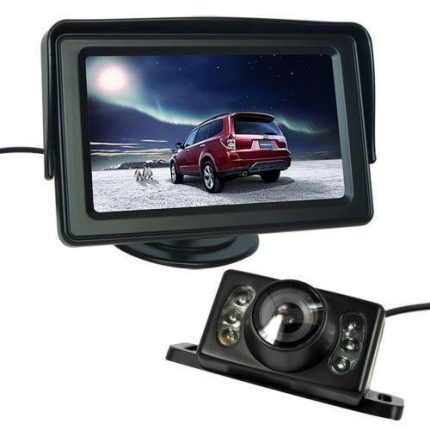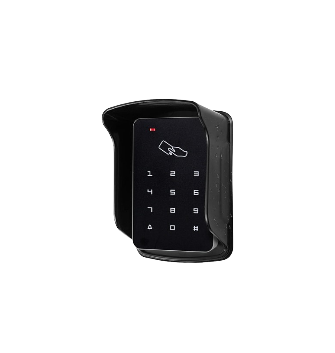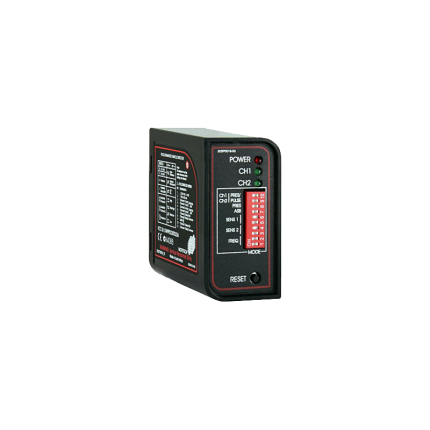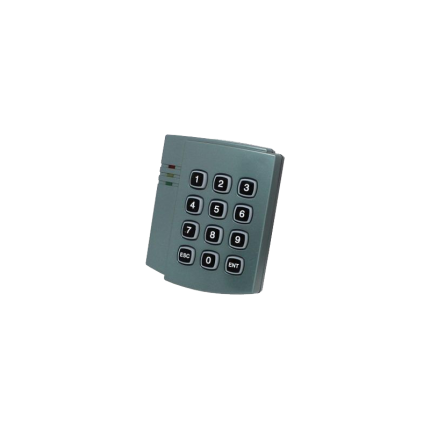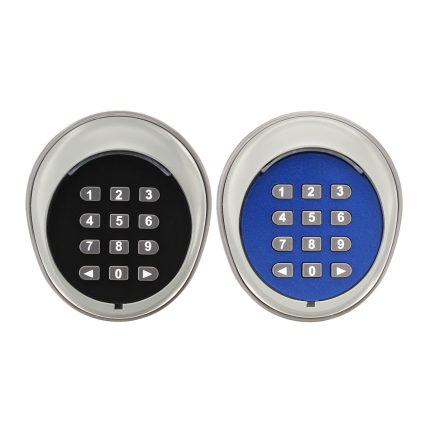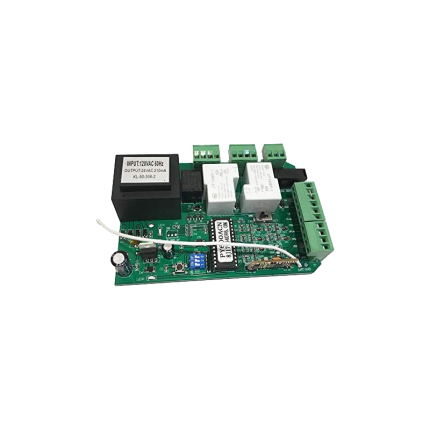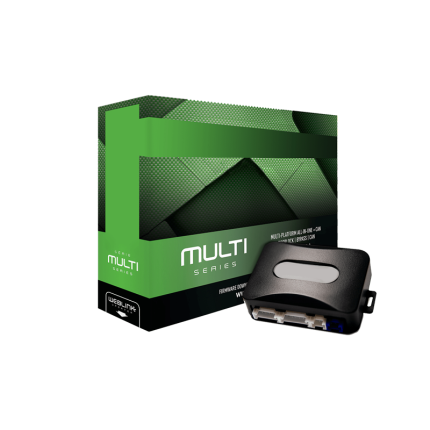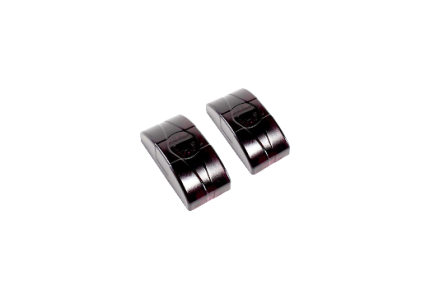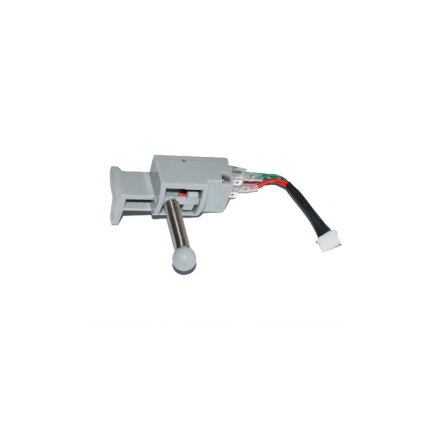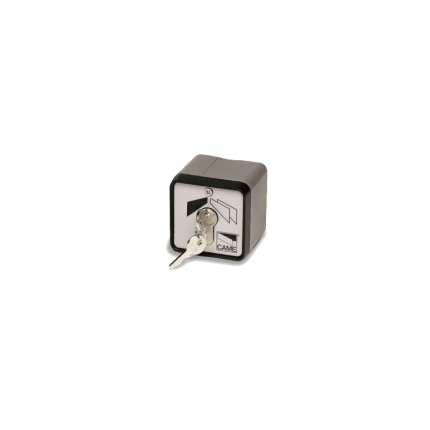Shop
Car back-up camera
Ship or pick up from our office.
Car back-up camera
A car back-up camera, also widely known as a rearview camera or reversing camera, is a specialized video camera mounted on the rear of a vehicle. Its primary function is to provide the driver with a visual feed of the area directly behind the car when the vehicle is in reverse. This significantly enhances safety and convenience, especially when parking or maneuvering in tight spaces. How it Works:- Camera Placement: The camera is typically small and discreetly mounted on the rear of the vehicle. Common locations include near the license plate, integrated into the trunk handle, or within the rear bumper.
- Activation: When the driver shifts the vehicle into REVERSE gear, the back-up camera automatically activates.
- Video Feed: The camera captures a wide-angle video image of the area behind the car.
- Display: This live video feed is then displayed on a screen inside the vehicle. This screen can be:
- An integrated display in the dashboard (common in newer vehicles).
- A dedicated monitor that mounts on the dashboard.
- A replacement rearview mirror with an integrated screen.
- An aftermarket car stereo head unit with a video input.
- Deactivation: When the driver shifts out of reverse, the camera typically turns off.
- Enhanced Safety: This is the most crucial benefit. Back-up cameras dramatically reduce blind spots behind the vehicle, helping drivers avoid collisions with:
- Pedestrians: Especially children and pets who may not be visible in rearview mirrors.
- Obstacles: Such as bollards, low walls, fire hydrants, or other vehicles.
- Improved Parking: Makes parallel parking and backing into parking spots much easier and more precise.
- Parking Guidelines: Many systems overlay dynamic (move with steering wheel input) or static lines on the screen to help the driver estimate distance and trajectory.
- Night Vision/Low-Light Capability: Many cameras are equipped with enhanced low-light sensors or infrared (IR) LEDs to provide a clear image even in dark conditions.
- Wide Viewing Angle: Essential for comprehensive coverage, typically offering 120 to 170 degrees of view to minimize blind spots.
- Weather Resistance: Since they are mounted externally, backup cameras are designed to be waterproof and dustproof (often with an IP67 rating or higher).
- Integration with Other Systems: Some advanced systems integrate with parking sensors (audible warnings) and Rear Cross-Traffic Alert (warns of approaching vehicles from the sides when backing out of a spot).
- Wired vs. Wireless:
- Wired cameras: Offer a more reliable connection and typically higher video quality, but require running cables through the vehicle.
- Wireless cameras: Easier to install as they transmit the video feed wirelessly, but can sometimes be susceptible to interference or have lower resolution.
Keypad Access Control K110V2000
Keypad Access Control K110V2000
*Waterproof Version *EM - RFID card/tag reader *Finger Touch *Backlight *DC 12 V *1000 Users *Doorbell button *Rain Shield Cover IncludedThe Keypad Access Control K110V2000 is a standalone access control system designed for single-door access, typically used for residential or small-to-medium commercial buildings.
It allows users to unlock the door using either a proximity card, a PIN code, or a combination of both.
Here's a more detailed breakdown:
Key Features:
- Multiple User Capacity: It can support up to 1000 users.
- Multiple Access Methods: Users can unlock the door using RFID cards, PIN codes, or both.
- Standalone Operation: It functions independently, without needing to be connected to a central computer.
- Wiegand Input/Output: It can connect to an external card reader (Wiegand 26 input) and a controller (Wiegand 26 output).
- Tamper Alarm: Includes a tamper alarm for added security.
- Backlit Keypad: The keypad is backlit, making it easier to use in low-light conditions.
- Short Circuit Protection: The output is automatically turned off if there's a short circuit in the electric lock or alarm output.
- Waterproof: Some models, like the V2000-C, are waterproof, making them suitable for outdoor use.
- Easy Installation and Programming: The system is designed for straightforward installation and programming.
- Doorbell Input: Some models include a doorbell input.
- Adjustable Settings: Features like door output time, alarm time, and door open time can be adjusted.
Applications:
- Residential Buildings: Ideal for controlling access to apartments or individual homes.
- Small to Medium Businesses: Suitable for offices, shops, and other commercial spaces.
- Warehouses and Factories: Can be used to manage access to secure areas.
- Other Applications: Laboratories, banks, and even prisons.
Safety sensor FT2008
Ship or pick up from our office.
Safety sensor FT2008
*NO/NC *AC/DC 12-24 V *Receiving Range: 15 Meters *IP 44A gate opener safety sensor is a device designed to detect objects or people in the path of an automatic gate and prevent it from closing or hitting them, ensuring safety and preventing damage or injury.
These sensors can be photoelectric, pressure sensors, magnetic sensors, or loop detectors and are crucial for preventing accidents and ensuring smooth gate operation.
Types of Gate Opener Safety Sensors:
-
Photoelectric Sensors:These sensors use an infrared beam to detect objects. When the beam is broken by an object, the gate opener is signaled to stop or reverse.
-
Pressure Sensors:These sensors are typically located along the edge of the gate and detect pressure when the gate comes into contact with an object.
-
Magnetic Sensors:These sensors use a magnetic field to detect the presence of vehicles or objects near the gate.
-
Loop Detectors:These sensors use a wire loop buried in the ground near the gate. When a vehicle or object passes over the loop, it triggers the gate to stop or reverse.
How They Work:
- Detection: The sensor detects the presence of an object or person in the gate's path.
- Signal: The sensor sends a signal to the gate operator.
- Action: The gate operator responds by stopping, reversing, or remaining open, depending on the sensor type and programmed settings.
Importance of Safety Sensors:
- Prevent Accidents: They protect people and vehicles from being hit by the gate.
- Prevent Damage: They help avoid damage to the gate, vehicles, or property.
- Ensure Reliable Operation: They contribute to the smooth and safe operation of the gate.
Exit Loop Detector
Ship or pick up from our office.
Exit Loop Detector
An exit loop detector is a system designed to automatically open gates or barriers for vehicles leaving a secured area. It works primarily on the principle of electromagnetic induction and is a common component in automated access control systems for driveways, parking lots, and commercial properties. Here's how it generally works:- Inductive Loop: A wire loop, usually rectangular, is buried beneath the surface of the driveway or exit lane. This loop is connected to a loop detector unit.
- Electromagnetic Field: The loop detector sends an alternating current through the wire loop, creating a continuous electromagnetic field around it.
- Vehicle Detection: When a vehicle (which contains a significant amount of metal) drives over or within the range of this electromagnetic field, it disrupts the field. This disruption causes a change in the loop's inductance.
- Signal to Gate Operator: The loop detector senses this change in inductance and sends a signal to the gate or barrier's control system.
- Automatic Opening: Upon receiving the signal, the gate operator is triggered to open, allowing the vehicle to exit without requiring a remote control, keypad, or manual intervention.
Keypad access control K100SC104
Ship or pick up from our office.
Keypad access control K100SC104
(Recommended for indoor usage) *Rain Shield Cover is included *Waterproof Version *EM/ID card/tag reader *Backlight *500 User *DC 12 VSafety sensor FO-MATIC
Ship or pick up from our office.
Safety sensor FO-MATIC
*NO/NC *AC/DC 12-24 V *Receiving Range: 15 Meters *IP 44 The Safety sensor FO-MATIC is a type of photocell safety sensor primarily used in automatic door and gate systems. It's designed to prevent accidents by detecting obstructions in the path of a closing door or gate. How it Works The FO-MATIC sensor operates using a photoelectric principle. It consists of two main components:- Transmitter: Emits an invisible infrared light beam.
- Receiver: Detects the infrared beam.
- Infrared Beam Barrier: Creates a safety zone that, when breached, halts door/gate operation.
- Digital Coding: Often features digital coding on two channels (A or B) to prevent interference from other sensors or light sources.
- Double Relay: Incorporates a double relay for switching contacts, enhancing reliability.
- Versatile Functionality: Can be used for both safety (preventing impacts) and anti-theft purposes (detecting unauthorized entry).
- Robust Design: Typically housed in a durable polycarbonate shell, and some models are designed to be weather-resistant (e.g., IP44 rated).
- Easy Installation: May include features like proportional LED alignment for simpler and safer setup.
- Wide Compatibility: Designed to be compatible with various automatic gate and door operators, including single swing, double swing, and sliding gates.
- Garage doors
- Sliding gates
- Swing gates
- Automatic pedestrian doors
Wireless Keypad Access Control KW402
Ship or pick up from our office.
Wireless Keypad Access Control KW402
*Wireless *Rain Shield Cover included *2 Channels *LED Back Light *433 MHz
The wireless keypad access control KW402 is the preferred secure activation device for the autoslide automatic door system. This security keypad will allow you to enter your home from the outside using a unique programmed code. Combined with the VDS and ZERO gate motor, you can have a secure and automated entryway into and out of your home or workplace.
The wireless keypad access control KW402 is wireless and provides the benefit of not having to run cables through your exterior walls. It has two channels that will allow you to not only have a regular access code but also one you can change for guests to access your home.
The wireless keypad access control KW402 is programmable for two separate codes up to eight digits long each. Audible beeps will alert you to an accepted code as well as an invalid code.
Specifications:
Duplicate Your Existing Remote Controllers so you always have a backup:
1.Vehicle central locking systems
2. Garage doors
3. Electronic gates
4. Electrical appliances/Home automation i.e. lights
5. Car sunroofs
6. Car/Motorbike alarms Easy to use, the 4 channel remote control system lets you take control of your gets, car, home and garage
Wireless Keypad Access Control KW402:
1,This is a dual channel transmitters that are activated only after having entered a Suitable combination.
2, The units are designed for installation in indoor or outdoor locations that ensures the utmost security because the transmitted code is changed at each transmission session.
3,The estimated transmission range is 200 m in open space and 35m indoors .
4, The units are designed to ensure battery life equivalent to an estimated 2 years of oper-ation considering 10 transmissions/day.
Specification Wireless Keypad Access Control KW402:
Power:6Volt DC 2PCS CR2032 Li battery Battery life:2 years (4 times operation every day)
Frequency:433.92MHz+/-75KHz
Transmitter power:1Mw
Data format:standard
Work temp:-20~+55 centidegree
Password number:0-8
Water proof level:1p54
Dimension:85*75*35mm
Weight:150g
Sliding gate operator control board SLRG110
Ship or pick up from our office.
Sliding gate operator control board SLRG110
The SLRG110 is a universal main control board for sliding gate operators that runs on 110-volt AC power.
It acts as the "brain" of a sliding gate system, managing its core functions.
Here's a breakdown of what the SLRG110 offers:
Core Functionality
- Motor Control: It receives signals from various access devices (like remote controls or keypads) and translates them into commands to control the gate's motor, initiating opening, closing, and stopping movements.
- Power Management: It receives power from a 110V AC source and directs it to the gate motor and other connected accessories.
- Adjustable Settings: The board typically allows for customization of gate operation, including:
- Adjustable speed settings for both opening and closing.
- Adjustable auto-close timer (e.g., 0, 30, 60, 90 seconds).
- Adjustable torque and closing force to suit different gate weights and preferences.
- Ability to add and delete remote controls easily.
- Option to set auto-close when power is restored after an outage.
Key Features & Safety
- Obstruction Detection: A crucial safety feature, the SLRG110 can detect obstructions in the gate's path during movement and automatically stop or reverse the gate to prevent damage or injury.
- This often utilizes infrared detection connectors for photocells.
- Remote Control Capability: It's designed to work seamlessly with remote controls for convenient operation.
- Emergency Release: The system usually includes an emergency release key for manual operation in case of power failure.
- Limit Switches: It connects to limit switches (often magnetic) that define the gate's fully open and closed positions, preventing overtravel.
- Accessory Inputs: The board has various input terminals for connecting additional accessories like:
- Photocells (safety beams)
- Manual push buttons
- Wired keypads
- GSM inputs (for remote access via mobile networks)
- Vehicle sensor exit wands
Universal Compatibility
The SLRG110 is considered a universal control board, meaning it's designed to be compatible with a wide range of sliding gate opener models.
This makes it a versatile replacement option for existing systems. It can operate gates weighing up to approximately 1750-1760 lbs.
Remote starter immobilizer bypass module
Ship or pick up from our office.
Remote starter immobilizer bypass module
A remote starter immobilizer bypass module is an essential component when installing an aftermarket remote car starter in most modern vehicles. Its sole purpose is to "trick" the vehicle's factory immobilizer system into believing that the correct key is present in the ignition, allowing the engine to start remotely. Here's a breakdown of what that means: What is a remote starter immobilizer bypass module system? Since around the late 1990s, and mandated for all new cars sold in Canada since the year 2000, virtually every vehicle is equipped with an electronic immobilizer system as an anti-theft measure. This system prevents the engine from starting unless it detects a specific, valid code.- How it works:
- Your car key (or smart key fob) contains a small electronic chip called a transponder. This chip stores a unique electronic code.
- When you insert the key into the ignition (or, with push-button start, have the fob within range), the vehicle's onboard computer (often via an antenna coil around the ignition barrel) reads the code from the transponder.
- If the code matches what's stored in the vehicle's ECU (Engine Control Unit), the remote starter immobilizer bypass module is deactivated, and the engine is allowed to start and run.
- If the code doesn't match, or if no valid code is detected (e.g., someone tries to hot-wire the car, or uses an unprogrammed key), the immobilizer will prevent the engine from starting, or it will start for a few seconds and then immediately shut off. It typically disables vital functions like the fuel pump or ignition system.
Safety sensor VDS-TEC2
Ship or pick up from our office.
Safety sensor VDS-TEC2
Technical Details:- NO/NC
- AC/DC 12-24 V
- Receiving Range: 15 Meters
- IP 44
- Compact
- Lightweight
- Portable
- Easy to use
- Function: It works by emitting an infrared light beam between two units: a sender and a receiver. If an object (like a person or vehicle) breaks this invisible beam, the sensor detects the interruption.
- Safety Feature: When the beam is broken, the VDS-TEC2 sends a signal to the gate's control board. This triggers an action, most commonly preventing the gate from closing to avoid accidents or activating an alarm.
- Applications: Its main application is in enhancing the safety of automated gates and doors in various settings, ensuring that they don't close on obstructions. It is compatible with different models of gate openers.
- Technical Specifications:
- Contacts: NO/NC (Normally Open/Normally Closed)
- Power Supply: AC/DC 12-24 V
- Receiving Range: Up to 15 meters (this range can be reduced in adverse weather conditions like fog, rain, or dust).
- IP Rating: IP44 (meaning it's protected against solid objects larger than 1mm and against splashing water from any direction).
- Design: It's described as compact, lightweight, portable, and easy to use.
Sliding gate operators limit sensor -Spring
Ship or pick up from our office.
Sliding gate operator limit sensor -Spring
A sliding gate operator limit sensor with a spring mechanism (also known as a mechanical limit switch or spring limit switch) is a common type of sensor used in automatic sliding gate systems to define the gate's fully open and fully closed positions. Here's how it works and what its characteristics are: Purpose of a Limit Sensor: For any automatic gate operator, the system needs to know exactly when the gate has reached its desired open and closed positions. This is crucial for:- Stopping the Motor: Preventing the motor from continuing to run once the gate has reached its limit, which would otherwise cause damage to the gate, the motor, or the track.
- Safety: Ensuring the gate stops precisely where it should, preventing it from hitting obstacles or over-extending.
- Proper Operation: Allowing for features like auto-closing, pedestrian mode, and proper synchronization if it's a dual-gate system.
- Components: A spring limit switch typically consists of:
- A microswitch (an electrical switch that requires very little force to operate).
- A spring-loaded lever, arm, or plunger connected to the microswitch.
- A mounting bracket to attach it to the gate operator or gate frame.
- Mounting: The spring limit switch is usually positioned on the gate operator itself, or on a bracket near the motor.
- Interaction with the Gate:
- On the sliding gate itself, usually along the gear rack or a specific part of the gate frame, two small "stop" tabs or flags are installed – one for the open limit and one for the close limit.
- As the gate moves towards its fully open or fully closed position, one of these tabs/flags will physically contact and push against the spring-loaded lever/plunger of the limit switch.
- This physical contact compresses the spring and activates the microswitch.
- Signal to Control Board: When the microswitch is activated, it sends an electrical signal to the gate operator's main control board.
- Motor Stop: Upon receiving this signal, the control board immediately cuts power to the motor, stopping the gate precisely at that determined limit.
- Physical Contact: The defining feature is that it relies on direct physical contact and force to activate the switch.
- Reliability: Generally reliable as they are a simple mechanical system.
- Durability: Made to withstand repeated physical contact. However, over time, the spring can wear out, lose tension, or the switch itself can be damaged by repeated impacts or debris.
- Adjustability: The position of the "stop" tabs on the gate can be adjusted to fine-tune the exact open and closed positions of the gate.
- Maintenance: May require periodic checks to ensure the spring is intact, the switch is clean, and the "stop" tabs are securely in place and correctly positioned. They can be susceptible to damage from impacts (e.g., if a child's toy or a pet gets in the way of the stop tab).
- Compared to Magnetic Limit Switches:
- Magnetic Limit Switches: These are more common in newer and higher-end gate operators (like many BFT Deimos "Ultra" models). They use magnets attached to the gate and magnetic sensors (reed switches or Hall effect sensors) on the operator. They offer a "contactless" operation, which generally leads to less wear and tear, greater precision, and less susceptibility to environmental debris or physical impact damage.
- Spring/Mechanical Limit Switches: Are typically more cost-effective and simpler in design. They are still widely used, especially in more budget-friendly or older gate operator models.
Key selector
Ship or pick up from our office.
Key selector
A gate opener key selector is a device that allows you to manually open and close an automatic gate using a physical key, providing an alternative access method in case of power outages or remote control malfunctions. It essentially disengages the automated system, allowing for manual operation of the gate. A gate opener key selector is a device used to control the operation of an automated gate (or door, garage door, barrier, etc.) using a physical key. It's essentially a key-operated switch that allows authorized users to open, close, or set the operating mode of the gate. Here's a breakdown of its function and characteristics:- Purpose: The primary purpose of a key selector is to provide a secure and convenient way to operate an automatic gate, especially in situations where remote controls, keypads, or other access methods might not be practical or desired (e.g., for maintenance personnel, or as a backup).
- Mechanism: It typically consists of a sturdy, often metal, housing that is mounted on a wall, column, or recessed into a wall. Inside, there's a key cylinder that, when turned, activates a microswitch or set of contacts. These contacts then send a signal to the gate opener's control unit, telling it to perform a specific action (open, close, or a specific operating mode).
- Security: Key selectors are designed to be robust and weather-resistant, often with vandal-proof features. The use of a physical key adds a layer of security, as only individuals with the correct key can operate the gate.
- Types and Features:
- Key-operated switches: The most common type, where inserting and turning a key triggers the gate's action.
- Universal or European cylinder locks: Different types of key cylinders can be used for varying levels of security and compatibility.
- Single or multiple microswitches: Some selectors have one switch for a simple open/close function, while others have multiple switches to allow for more complex operations (e.g., partial opening, full opening, lock, exit only, automatic mode).
- Wall-mounted or flush-mounted: They can be installed on the surface of a wall or column, or recessed for a more discreet look.
- Material: Often made from durable materials like aluminum or die-cast metal to withstand outdoor conditions and potential impact.
- Integration: Key selectors are accessories that integrate with the overall automated gate system, complementing other access control methods like remote controls, keypads, transponder readers, or even smartphone apps.

